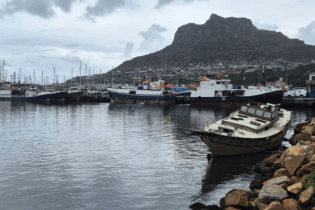EXPECT more ratings downgrades and a rapid outflow of foreign investment if the government does not quickly spell out its plans to fix the economy.
Ratings agencies Moody’s and Standard & Poor’s (S&P) downgraded South Africa’s sovereign debt rating in the past three weeks, citing concern over mining strikes, underlying social tension and regulatory uncertainty. A ratings downgrade means government and companies will have to pay more for borrowing, making it harder to finance infrastructure projects and the economy. The effect is already evident. Moody’s downgraded credit ratings of 12 municipalities, Eskom, Telkom, the Industrial Development Corporation (IDC), the Development Bank of Southern Africa (DBSA) and deposit ratings of Standard Bank, Absa, FirstRand, Nedbank and Investec. All were placed on a negative watch, meaning further downgrades are likely unless conditions improve. S&P issued downgrades this week for the DBSA, Standard Bank, FNB, Eskom, Santam, Anglo American, and placed Sasol, Gold Fields and AngloGold Ashanti on negative credit watch. Fitch Ratings, which also has a negative outlook on South African debt, said it planned to complete its annual review of South Africa at the end of the year. Kevin Lings, chief economist at Stanlib, said that unlike country downgrades in the European Union, for example, South Africa’s downgrade “is not because of a tough economy. It has to do with our domestic issues and the way we have not managed to articulate our economic policy and that has led to a high degree of uncertainty around policy.” Mr Lings said he expected another round of ratings adjustments if no clarity was provided by the ANC’s Mangaung elective conference and the national budget. “If we still have policy ambiguity after the leadership conference, there’s a clear risk of another downgrade. We need to make sure by February next year we’ve done enough to ward off any further downgrade,” he said. Political analyst Daniel Silke said South Africa was being called to account for its policy inertia. Azar Jammine, chief economist at Econometrix, said South Africa was going through a leadership crisis and needed a change at the top. It needed an “appropriate president”. “I shudder when I see how many potentially effective leaders there are that I come across in everyday life in my business dealings, and who we are choosing as our leaders,” said Mr Jammine. “Politicians’ inability to execute policies is their biggest challenge. Closer co-operation with the private sector is one way to move mountains. We just need the political will.” The Economist’s cover story this week, “Cry, the beloved country — South Africa’s sad decline”, highlighted the need for the government to be “jolted” into action. “Marikana should be a wake-up call to the government, but South Africa’s leaders, engrossed by factional infighting, appear deaf. If the government does not respond more vigorously, the country could see a surge in the kind of populism peddled by Mr (Julius) Malema,” it said. The government also came under fire in articles published in The Wall Street Journal, The Washington Post and Financial Times (FT) over the past two weeks, with the FT’s Lex column warning of an “African Spring”, saying “it’s too late to pour this crisis back into the bottle”. In a public lecture at the University of the Witwatersrand this week, Russell Loubser, former JSE CEO, criticised former ANC Youth League leader Malema’s “constant, brainless talk about nationalisation”. He said confidence in South Africa could not be built in a climate of corruption, violent strike action, undermining of the judiciary and regulatory and tax uncertainty. Sandile Zungu, chairman of Zico and general secretary of the Black Business Council (BBC), said he was “deeply concerned” about the economy and wildcat mining strikes in particular. “It is the single largest threat to our endeavours to create employment, build credibility as an investment destination and reach economic growth targets in the short term,” said Mr Zungu. However, he said President Jacob Zuma demonstrated “bold leadership” in convening high-level meetings with government, business and union leaders in the past week. The government said the rule of law would be upheld and infrastructure projects fast-tracked, business leaders’ pay would be frozen for a year and unions will urge members to end wildcat strikes and return to work. Herman Mashaba, chairman of the Free Market Foundation, said labour legislation that did not serve only 2-million union members was needed. That would encourage hiring. “You cannot address unemployment by punishing business people and portraying them as the enemy of the people,” he said. According to the latest World Competitiveness Report from the World Economic Forum, South Africa ranks 113th for labour market efficiency, a drop of 18 places from the previous year. It is 143rd for its rigid hiring and firing practices, 140th for lack of flexibility in wage determination by companies and 144th for the significant tensions in labour-employer relations. Speaking at a meeting on Friday at which the government promised to invest R844bn in infrastructure over the next three years, Mr Zuma said “no country should be made to withstand such negativity and total disregard of progress being made or any positive attribute. We wish to encourage public opinion makers to also reflect the strides that have been made in all 18 years.” PLATINUM Lonmin: Fears of another strike at Lonmin’s Marikana mine, where 46 people were killed during a violent strike protest in August, resurfaced this week when workers started protesting again on Thursday about unhappiness over the arrests of community members.However, workers were convinced to return to work and the miner had 85% attendance on Friday.
Marikana strikers returned to work last month after being granted pay increases of between 11% and 22% following a six-week strike. The strikes forced the company to close down its K4 shaft, which resulted in 1,800 job losses. On average, Lonmin lost out on about 200oz of platinum a day. Anglo American Platinum: Workers have been on strike for the past five weeks. The world’s largest platinum miner, with a workforce of about 35,000, dismissed 12,000 workers for embarking on an illegal strike. Amplats is losing 3,800oz of platinum production a day. Impala Platinum: It fired 17,000 workers who embarked on the first wildcat strike in February. Some were later reinstated after a wage agreement was reached, with some mineworkers getting increases of up to 18%. Atlatsa Resources: It fired 1,000 workers on Tuesday. GOLD AngloGold Ashanti: South Africa’s biggest gold producer will this week decide whether to issue ultimatums to the illegally striking workers who closed down most of its operations. This week, it amended a wage offer to striking workers to entice the 24,000 workers who have been on strike for more than three weeks to return to work. But workers rejected the offer. It has lost almost 100,000oz of gold to date, which translates into about R1.5bn in revenue losses at current gold prices. Gold Fields: The country’s second-largest gold miner on Friday said workers who did not return to work for Monday night’s shift would be axed at its KDC East mine. Similar ultimatums at its Beatrix and KDC West mines saw most of the workers return to work on Friday. About 1500 workers who did not report for work before the deadline at KDC West were deemed dismissed. It has lost about R1.2-billion in revenue. Harmony Gold: Workers have been on an illegal strike at Kusasalethu mine for two weeks and it is losing out on between 20kg and 25kg of gold a day. Gold One: It fired 1,500 workers who were on an illegal strike at its Ezulwini mine. OTHER MINE STRIKES Police cleared 300 strikers from Kumba Iron Ore’s Sishen mine this week. It has lost R1.2bn in revenue and hopes to restart production next week. Samancor Chrome has urged workers to return to work on Monday. Strikes continue at Xstrata’s Elands Platinum mine, Petra Diamonds and Forbes and Manhattan Coal. OTHER SECTORS Earlier this week, 200,000 municipal workers warned that they would go on strike in the coming week. Farmworkers have started mobilising to strike. The truck strikes that ended last week cost workers a total of R271m in lost wages. Employers suffered a R1.2bn loss a week. Striking miners sing during a strike at the AngloGold Ashanti mine in Carletonville, northwest of Johannesburg, on Friday. PICTURE: REUTERS
Source: http://www.bdlive.co.za/
Striking miners sing during a strike at the AngloGold Ashanti mine in Carletonville, northwest of Johannesburg, on Friday. PICTURE: REUTERS
Source: http://www.bdlive.co.za/







